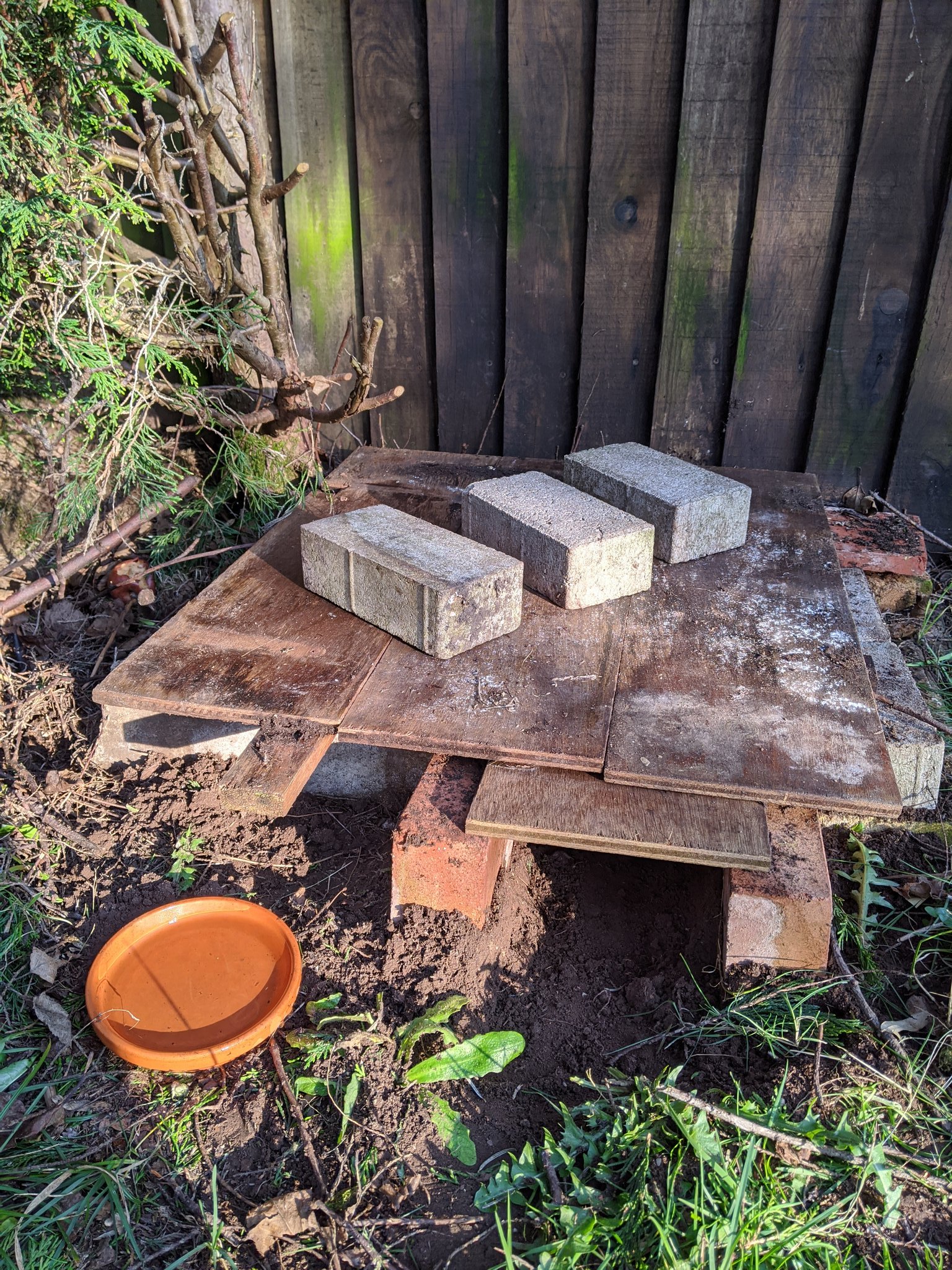Strange times are upon us! The UK has been in lockdown since last Monday and we are still getting used to not being able to go out whenever we like and the supermarket shelves being bare. But nature is carrying on business as usual! Birds flitting about foraging for nesting materials for impending eggs, lolling queen bumblebees looking for nest sites and hibernating hedgehogs are waking up as the temperatures rise, looking to fatten up after winter.
An easy way to help hedgehogs post winter sleep, is to feed them cat/dog food and provide plenty of water. In order to stop hungry foxes and pesky cats from stealing your hedgehog's food, you can build a feeding station. It doesn't have to be anything fancy and can be made with things you may already have in your garden or shed.
1. You can use old bricks to make a base. Just make sure it's big enough for a hog to get in and out of, and ensure that the entrance is 13cm x 13cm.
2. You can make a lid out of a big piece of wood or plastic- I've screwed together some old planks of wood. Make sure to weigh the lid down with bricks or something heavy, as hungry badgers are strong and will try and get to the food!
3. Give your hogs some tasty cat or dog food- it can be either dry food or wet (no fish flavour and jelly rather than gravy is best). Make sure you provide plenty of water, especially in the summer months.
4. Wait and see if your food has disappeared! You could even use a wildlife camera to see who has visited!



Comments
Post a Comment